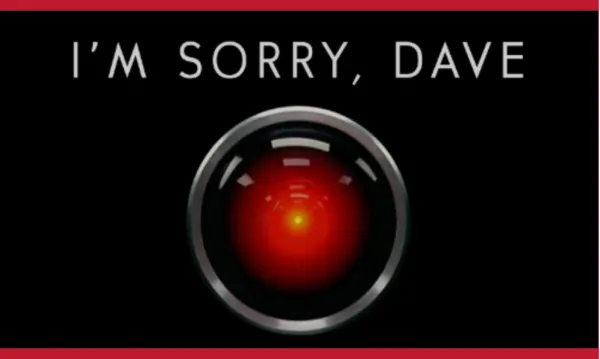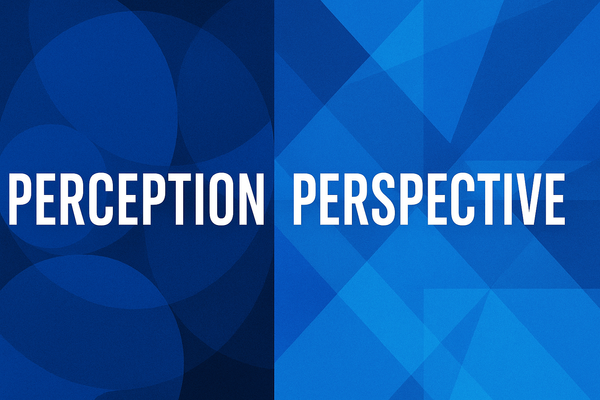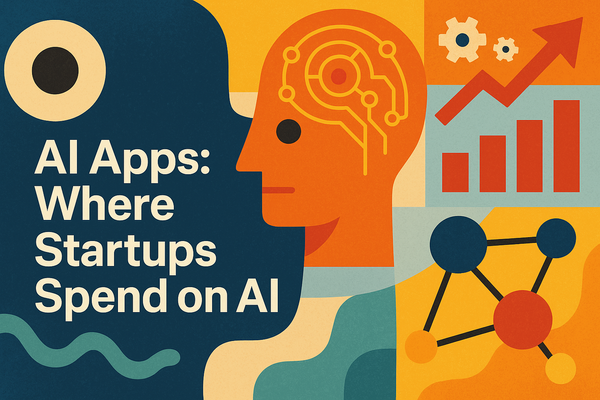AI and ML: Think "Parent" and "Child"
There is a common misconception that Artificial Intelligence (AI) and Machine Learning (ML) are competitors—at least, that's what Google search trends suggest. Let’s debunk this myth here.
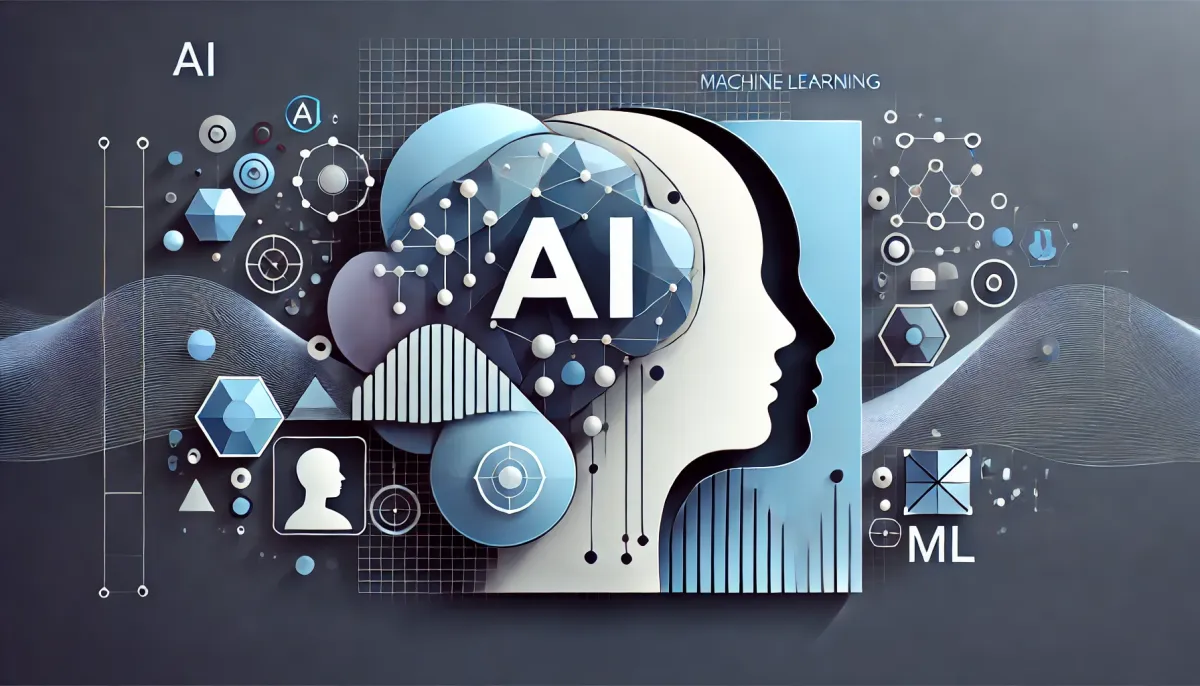
If you've been following tech news or reading about the latest innovations, you've likely encountered the terms "Artificial Intelligence" (AI) and "Machine Learning" (ML). These buzzwords often appear in the same conversations, and sometimes people use them interchangeably or frame them as competing approaches. This common misunderstanding leads to questions like "Which is better: AI or ML?" However, this comparison fundamentally misunderstands their relationship.
This guide will clarify what AI and ML actually mean, how they relate to each other, and why understanding their connection matters—all without requiring a computer science degree to follow along.
AI is the Big Picture, ML is One Approach
The most important concept to grasp is that Artificial Intelligence is the broader idea, while Machine Learning is one method to achieve AI. They're not competitors—they're related concepts where one exists within the broader context of the other.
Think of it this way: AI is like "transportation" – the overall goal of getting from point A to point B. ML is like one specific mode of transportation – such as "driving a car." Just as there are many ways to transport people and goods (cars, trains, planes, boats), there are multiple approaches to creating intelligent systems. Machine learning is currently one of the most popular and successful approaches to building AI systems.
What is Artificial Intelligence?
Artificial Intelligence refers to the broader idea of machines being able to carry out tasks in a way that we would consider "smart" or "intelligent."
AI systems aim to mimic human-like intelligence in various forms. They can perform reasoning by making decisions based on available information. They can learn and improve from experience. They excel at problem-solving, finding solutions to complex challenges that might otherwise require human intervention. Many AI systems use perception to understand their environment through sensors, and some have advanced language understanding capabilities that allow them to comprehend and generate human language.
Real-world AI Examples
In our everyday lives, we encounter AI in many forms. Voice assistants like Siri, Alexa, and Google Assistant use AI to understand our requests and respond appropriately. Self-driving cars employ AI to navigate roads and make driving decisions. In healthcare, medical diagnostic systems help doctors identify diseases with greater accuracy. When you browse Netflix or Amazon, recommendation systems use AI to suggest content or products you might enjoy. Even games have been transformed by AI, with chess and Go-playing programs now capable of defeating human champions.
What is Machine Learning?
Machine Learning is a subset of AI that focuses on developing algorithms that can learn from data and make predictions or decisions based on that learning. In other words, ML is a way to teach machines to learn from experience, much like how humans learn. Instead of programming explicit rules for every possible scenario, ML systems are designed to identify patterns from data.
The core idea of machine learning is that we don't tell computers exactly how to solve a problem. Instead, we provide them with lots of examples (data), let them figure out patterns on their own, and then use those patterns to make predictions or decisions about new data.
How Machine Learning Works (Simplified)
Imagine teaching a child to identify fruits. Using a traditional programming approach, you might create explicit rules like "if it's round and red, it might be an apple; if it's yellow and curved, it might be a banana." But a machine learning approach would be more like showing the child thousands of images of different fruits labeled with their names, and letting them identify the patterns that distinguish one fruit from another on their own.
Types of Machine Learning
ML algorithms can be categorized into three main types: supervised learning, unsupervised learning, and reinforcement learning.
Supervised learning involves training a machine learning model on labeled data, where each example in the data is associated with a target output. The model then learns to predict the output for new examples it has not seen before. For instance, an email spam filter might be trained on thousands of emails that humans have already marked as "spam" or "not spam." After learning from these examples, it can then identify patterns to classify new incoming emails.
Unsupervised learning involves training a model on unlabeled data, where the algorithm finds patterns and structures in the data without any explicit target output. This is similar to giving a student a collection of objects and asking them to sort them into groups that make sense, without telling them what the groups should be. A common application is customer segmentation, where businesses identify groups of similar customers based on purchasing behavior, without predetermining the categories.

Reinforcement learning is a type of learning where an agent learns to make decisions based on feedback from its environment, such as rewards or punishments. Think of teaching a dog new tricks through treats (rewards) and verbal corrections (penalties). This approach powers game-playing AI systems that learn optimal strategies through repeated play, as well as autonomous robots that learn to navigate their environments.
Deep Learning: A Subset of Machine Learning
To add another layer, deep learning is a specialized subset of machine learning inspired by the structure of the human brain. Deep learning uses artificial neural networks inspired by the human brain, with multiple processing layers that extract increasingly complex features from data. The "deep" in deep learning refers to these many layers working together. This approach has revolutionized our ability to solve previously challenging problems.
Think about when your smartphone unlocks after recognizing your face, or when you speak to a voice assistant that understands your questions. These seemingly magical abilities come from deep learning systems processing millions of examples to learn patterns that would be nearly impossible to program manually. Similarly, when a translation app instantly converts text between languages or when social media automatically suggests people to tag in your photos, deep learning algorithms are quietly doing the heavy lifting.

How These Concepts Fit Together
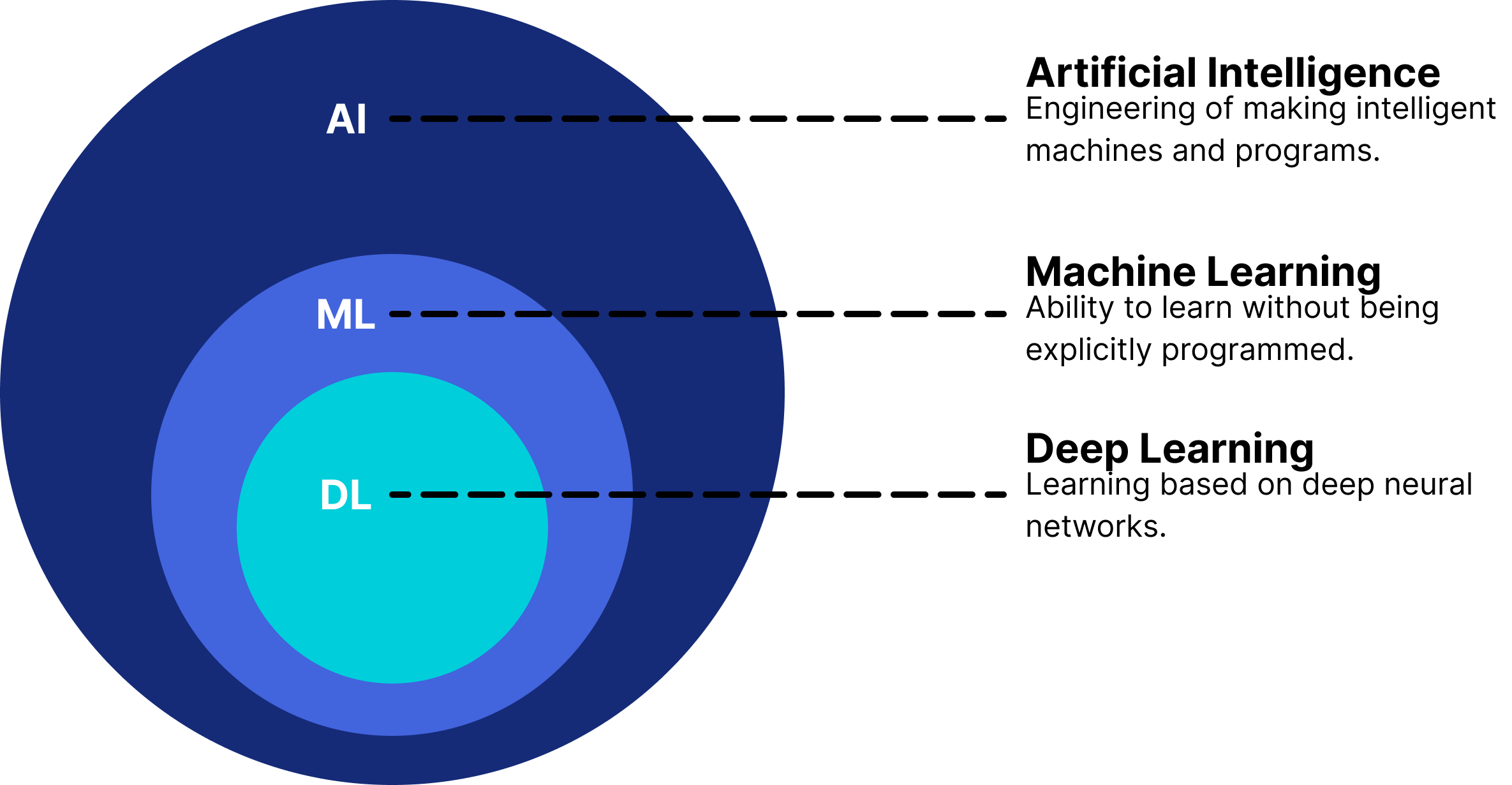
To summarize the relationship:
- Artificial Intelligence is the broadest concept: machines mimicking human intelligence
- Machine Learning is a subset of AI: systems that learn from data
- Deep Learning is a subset of Machine Learning: using deep neural networks
This nested relationship shows why comparing "AI vs. ML" doesn't make sense. It would be like asking "Which is better: transportation or cars?" One is simply a method of achieving the other.
Why This Distinction Matters
Understanding this relationship helps in several ways:
When businesses talk about implementing "AI," they usually mean specific applications like machine learning models. Knowing the difference helps cut through marketing hype and understand what's actually being offered.
Development approaches differ significantly. Traditional AI might involve extensive rule-based programming, while ML requires data collection and training methodologies.
Each has different strengths and limitations. Some problems are better solved with rule-based AI approaches, while others benefit from machine learning's ability to find patterns in complex data.
Integration, Not Competition
The future of intelligent systems doesn't lie in choosing between AI and ML, but in thoughtfully integrating different approaches. The most powerful systems often combine elements of traditional programming, various machine learning techniques, and other AI methodologies to solve complex problems.
As these technologies continue to evolve, they'll become increasingly intertwined in ways that make the distinctions even less relevant to end users. What will matter most is how well they solve real-world problems, not which technical category they belong to.
Rather than thinking of "AI vs. ML" as competitors, it's more accurate to understand machine learning as one of the most successful approaches to achieving artificial intelligence. Both concepts are valuable and complementary, with machine learning providing powerful tools within the broader AI landscape.
The next time you encounter these terms, remember: it's not about which is better, but about how they work together to create the intelligent systems transforming our world.

